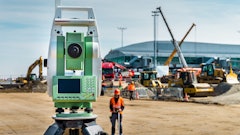
“With this first customer fleet, our fuel-cell trucks are now being tested in real customer operation. A win-win situation for both sides: our customers get to know fuel-cell technology in daily real-life operation and our engineering team gets to better understand customer needs and relevant use cases, taking them into account for series development.”
-Andreas Gorbach, member of the board of management of Daimler Truck AG, responsible for truck technology
Daimler Truck is entering the next development phase on the road to decarbonize transportation with hydrogen-powered trucks. After a rigorous testing phase on the test track and on public roads, the fuel-cell trucks have now reached an advanced development stage for deployment in first customer fleets.
Consequently, Daimler Truck is now taking the next step by building a first customer-trial fleet of Mercedes-Benz GenH2 Trucks. Expected from mid-2024, the companies Amazon, Air Products, INEOS, Holcim and Wiedmann and Winz will take part in first customer trials to gain initial experience in CO2-free long-distance transport with fuel-cell trucks.
Hydrogen Truck Deployment
The five semi-trailer tractors will be deployed in different long-haul applications on specific routes in Germany, such as the transport of building materials, sea containers or cylinder gases. During these first customer trials the GenH2 Trucks remain under the direct supervision and responsibility of Mercedes-Benz Trucks. The vehicles will be refueled at designated public liquid hydrogen filling stations (sLH2) in Wörth am Rhein and in the Duisburg area.
Daimler Truck and its partner companies are thus creating a lighthouse project and demonstrating that decarbonized transport with hydrogen-powered trucks is already possible today. However, for the transformation to succeed, it will be necessary in the coming years to ensure the build-up of an international refueling infrastructure and a sufficient supply of green liquid hydrogen.
“Amazon is continuously working towards becoming carbon neutral by 2040. The decarbonization of our transport network plays a crucial role in achieving this milestone. All logistics stakeholders - from manufacturers to energy companies and operators - must therefore continue to invest, experiment and innovate. We look forward to participating in this pilot project and learning from it,” said Andreas Marschner, vice president, Amazon Transportation Services.
Liquid Hydrogen Technology (sLH2)
Daimler Truck prefers liquid hydrogen in the development of hydrogen-based drives. In this aggregate state the energy carrier not only has a significantly higher energy density, but transport costs can also be significantly reduced. As a result, more hydrogen can be carried, which significantly increases the range and enables comparable performance of the vehicle with that of a conventional diesel truck. Liquid hydrogen tanks also offer advantages in terms of cost and weight. Therefore, the use of liquid hydrogen enables a higher payload.
For the first time, a new refueling process for liquid hydrogen will be used in the customer-trial fleet: the so-called “sLH2 technology” (sLH2 = “subcooled” liquid hydrogen). The technology was developed jointly with Linde and is freely available to all interested companies via an ISO standard. The innovative approach enables, among other things, an even higher storage density compared to LH2 and easier refueling within 10–15 minutes.
The companies are planning the first refueling of a fuel-cell truck at a pilot station in Wörth am Rhein for the beginning of 2024. Daimler Truck and its partners are planning for a high level of transparency and openness around the relevant interfaces of the jointly developed sLH2 technology. The goal is to collaborate with other companies and associations where possible to develop their own refueling and vehicle technologies that apply the new liquid-hydrogen standard and thereby establish a global mass market for the new refueling process.
Learn more on IRONPROS: What's the difference between hydrogen fuel cell and hydrogen internal combustion engine?
GenH2 Truck Comparable with Conventional Long-haul Trucks
The development engineers of Daimler Truck have based the GenH2 Truck on the characteristics of the conventional Mercedes-Benz Actros long-haul truck in terms of payload, range and performance. The Mercedes-Benz GenH2 Trucks, which are used in these first customer trials offer a payload of approx. 25 tons at a gross combination weight (GCW) of 40 tons. Two special liquid hydrogen tanks and a particularly powerful cellcentric fuel-cell system enable this high payload and long range. They represent the centerpiece of the GenH2 Truck.
The two stainless-steel liquid-hydrogen tanks of the GenH2 Truck have a particularly high storage capacity of 88 kilograms (44 kg each) which make them well suited for covering long distances. The stainless-steel tank system consists of two tubes, one within the other, that are connected to each other, and vacuum insulated.
The fuel-cell system of the GenH2 Truck delivers 300 kilowatts (2 x150 kW) and the battery provides an additional 400 kW temporarily. At 70 kWh, the storage capacity of the battery is relatively low, as it is not intended to meet energy needs, but mainly to be switched on to provide situational power support for the fuel cell, for example during peak loads while accelerating or while driving uphill fully loaded. At the same time, the relatively light battery allows a higher payload. It is recharged with braking energy and excess fuel-cell energy. A core element of the sophisticated operating strategy of the fuel-cell and battery system is a cooling and heating system that keeps all components at a suitable operating temperature, thus ensuring maximum durability. In a pre-series version, the two electric motors are designed for a total of 2 x 230 kW continuous power and 2 x 330 kW maximum power.
Daimler Truck’s Dual-track Strategy with Hydrogen and Battery Powered Vehicles
As one of the world’s largest commercial vehicle manufacturers, Daimler Truck has committed itself to the Paris Climate Agreement. The objective is to offer new vehicles that are CO2-neutral in driving operation in our global core markets (Europe, USA and Japan) by 2039. Battery-electric trucks are the ideal choice for distribution haulage and in the case of the eActros 600, for long-distance haulage with regular deployment on plannable routes with suitable distances and charging options.
However, fuel-cell trucks could be a better solution especially for very flexible and particularly demanding deployments in heavy-duty transport and long-distance haulage. In addition, the availability of appropriate infrastructure and sufficient green electricity are crucial for a successful transition to CO2-free technologies. Daimler Truck is convinced that rapid and cost-improved coverage of this energy demand can only be achieved with both technologies.
Register a free IRONPROS account today to access product search tools, connect directly with brands and more!


























